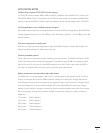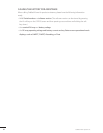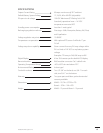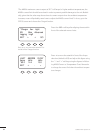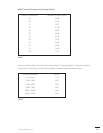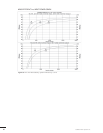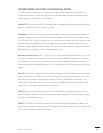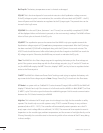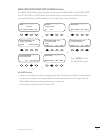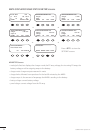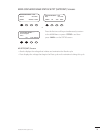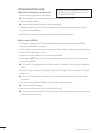
68
OutBack Power Systems Inc.
Bat Tmp Err The battery temperature sensor is shorted or damaged.
EQ 0:00 This is the time elapsed in hours and minutes since the Equalization voltage was met.
If the EQ voltage set point is not maintained, the controller will revert back to EQ-MPPT – the EQ
timer will pause until the batteries are regulated at the EQ target again. The paused time can be
viewed in the Log2 menu.
EQ DONE Once the set EQ time, (between 1 and 7 hours), has successfully completed, EQ DONE
will be displayed either until a button is pressed, or the next morning’s wakeup. The MX60 will tran-
sition to Float cycle at the end of the EQ cycle.
EQ-MPPT The equalization process has started and the MX60 is trying to regulate towards the
Equalization voltage set point. EQ is not battery temperature compensated. After the EQ voltage
has been reached, EQ 0:00 will be displayed along with the EQ time in hours and minutes. The
AC/DC loads should be turned o and the battery should be charged so the MX60 can reach the
EQ voltage set point. Otherwise, the MX60 may not reach or maintain the EQ cycle.
Float The MX60 is in the Float charge stage and is regulating the battery at the Float voltage set
point. If the system cannot keep up with the Float voltage set point, (e.g. AC and/or DC loads are
on), the MX60 will employ the MPPT function, display F-MPPT, and try its best to regulate the bat-
teries to the Float set point.
F-MPPT The MX60 is in Maximum Power Point Tracking mode trying to regulate the battery volt-
age towards the Float voltage set point. Note: Charge Timer (ChgT) is inactive in the Float state.
GT Mode In a system with an OutBack FX G-series Inverter/Charger, HUB and MATE, the MX60 will
display GT Mode if and only if the inverter is in Sell mode and the MX60 is in Bulk (B-MPPT) or Float
(F-MPPT) cycle. This is also a good indicator for establishing proper Grid tie mode communication
between the FX G-Series Inverter(s) and MX60.
High Voc This indicates the PV array’s open circuit voltage is too high for the controller to safely
operate. This should only occur with systems using 72 VDC nominal PV arrays in very cold tem-
peratures (below 50 F / -150 C). The controller will automatically restart operation once the PV
array’s open circuit voltage falls to a safe level (141 VDC). The amount of time required to reset is
dependent on the module type, ambient temperature, and the amount of sunlight directly on the
PV array. Normally, the controller starts in the morning within a few minutes of the PV array being
in direct sunlight.




